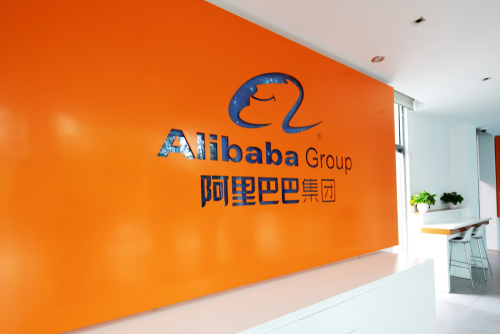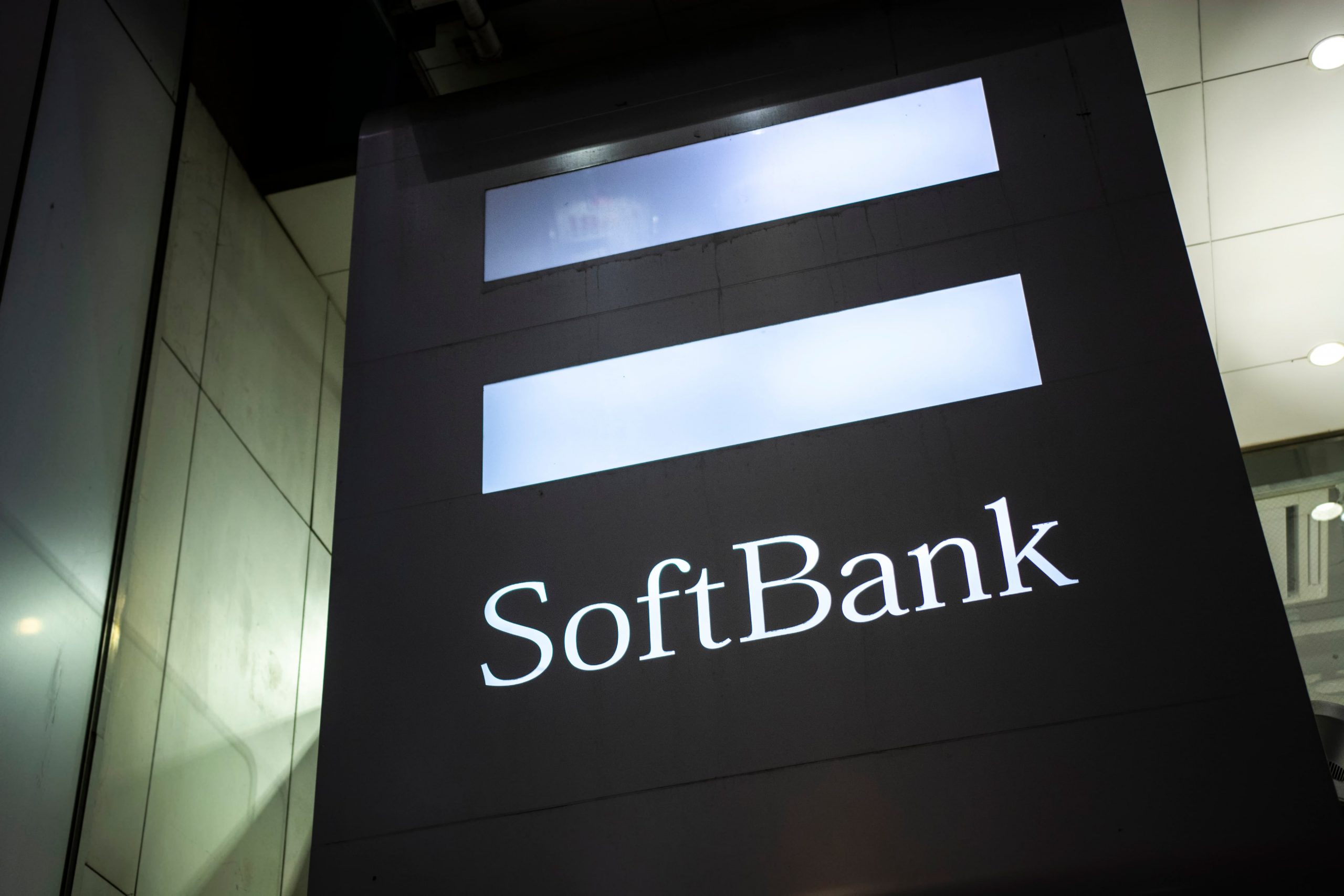This site uses cookies to provide you with a great user experience. By using BondbloX, you accept our use of cookies.
Bond Market News
Olam, DaFa, Beijing Cap Launch $ Bonds; YPF, Pan Bros Downgraded; CFLD’s $ Bonds’ Slide Continues; Alibaba’s $ Bonds’ Z-Spread Widens


S&P and Nasdaq continued their rally, up 0.6% and 1% on Friday. Tesla again closed ~8% higher. US Non-farm payrolls saw a surprise 140k fall versus expectations of a 71k increase highlighting a need for fiscal spending, as per Joe Biden. European equities also rallied 0.3-0.5%. As stocks continue to move higher, BofA’s chief strategist Michael Harnett said, “Sell the vaccine: frothy prices, greedy positioning, inflationary and desperate policymakers, peaky China and consumer all ultimately a toxic brew in 2021”. US IG CDS spreads were 0.5bp tighter and HY was 1.9bp tighter. US 10Y Treasury yields climbed higher to 1.12% despite the macro data. EU main and crossover CDS spreads tightened 0.4bp and 2.7bp respectively. Asia ex-Japan CDS spreads widened 0.3bp and Asian equities have opened ~0.5% higher this morning.
Bond Traders’ Masterclass – Avail 30% on a Bundle Ticket of 5 Sessions
BondEvalue is conducting a Bond Traders’ Masterclass across five sessions specially curated for private bond investors and wealth managers to develop a strong fundamental understanding of bonds. The sessions will be conducted by debt capital market bankers who have previously worked at premier global banks such as Credit Suisse, Citi and Standard Chartered. Click on the image below to register.
We are also conducting a complimentary session on Navigating The Bond Markets by Leveraging The BEV App tomorrow, January 12. This session is aimed at helping bond investors in tracking their investments using the BondEvalue App.
New Bond Issues
- Olam S$ PerpNC5.5 at 5.5% area
- Beijing Capital Group $ 5Y senior bond/sub PerpNC3.5 at 5.125%/6.5% area
- DaFa 364-day $ bond at 12.4% area
- KDB 3Y5M/5.5Y/10Y $ green bonds at T3+55/T5+65/T10+75 areas; books over $1.75bn
- Fujian Zhanglong $ 2Y11M bond at 3.7% area
- SPDB Singapore branch $ 3Y at T+120bp area; books over $1bn
- ABC NY branch $ 3Y/5Y at T+110/T+120bp areas, books over $2.2bn

New Bond Pipeline
- Yuexiu Property $ bond
- Singapore Airlines $ bond
- China Huaneng $ bond
- Sritex $ Yankee bond
- China Cinda HK $ bond
- Tower Bersama $ bond
- SK Hynix $ bond three-tranche including green bond
- PFC $ bond
- REC $ bond
Rating Changes
- Fitch Upgrades Realkredit Danmark’s CC T Covered Bonds to ‘AAA’, Affirms CC S Covered Bonds at ‘AAA’
- Fitch Downgrades YPF S.A. to ‘C’ on Proposed Exchange Offer
- Fitch Downgrades Pan Brothers to ‘CC’/’CC(idn)’ as Significant Maturity Looms Closer
- Fitch Affirms Devon’s Ratings; Upgrades WPX’s Ratings at ‘BBB’; Assigns Positive Outlook
2020 Bond Market Round Up – India
2020 was a cheerful year for Indian dollar bonds as 79% of the bonds ended the year higher than where they began. Among the best performing bonds, junk rated corporates Yes Bank, Indiabulls Housing Finance and Abja (Tata Steel) topped the list with its dollar bonds returning 9-18% ex-coupon to investors in 2020. Yes Bank’s 3.75% dollar bonds due 2023 rose over 18% after state-owned lender State Bank of India and certain private lenders including HDFC Bank infused capital into the bank, which gave confidence to bondholders. Other prominent names on the gainers list include India’s most valuable company Reliance Industries, telecom operator Bharti Airtel and several state-owned corporates such as Rural Electrification Corp, Power Finance Corp, ONGC, EXIM India and IRFC.
Among the worst performing bonds, mining conglomerate Vedanta topped the chart with its 6.125% 2024s losing 22% of its value in 2020. The pull-to-par (Term of the day, explained below) phenomenon was apparent from the list as several bonds maturing in 2021 saw its bond prices fall to trade closer to 100. Delhi International Airport (DIAL) saw its dollar bonds fall ~4% through the year following a downgrade by S&P to B+ from BB- in July last year on low passenger traffic due to the pandemic.

The largest deals in India were shared by Vedanta, Bharti Airtel, EXIM and Adani Electricity issuing $1bn each followed by JSW Steel, Adani Ports and PFC at $750mn each. Future Retail, which was marred by the Amazon-RIL tiff also made it among the largest issuers, raising $500mn via a 5Y bond. In terms of returns since issuance, Bharti Airtel’s 5Y topped the list followed by Adani Ports’ 7Y issue.

In case you missed it, we summarized the bond market in terms of best/worst performing bonds, largest deals and issuance volume for global and Asian dollar bonds in 2020. You can read the full report via the button below:
The Week That Was


The new year brought with it strong risk-on sentiment as US treasuries sold-off and stock markets rallied. The US 2s10s yield curve has steepened ~19bp since the beginning of the year with further fiscal stimulus expected post the Democrat dominated Georgia senate run-offs, besides strong ISM data and reflation trade expectations.
A flurry of issuances swept the bond markets in the first week of the new year. US primary market issuances were at $66.3bn – IG at $55.5bn and HY at $10.8bn. In North America, there were a total of 17 upgrades and 20 downgrades combined, across the three major rating agencies last week. LatAm saw $6.9bn of deals priced with Mexican cement company Cemex raising $1.75bn in the region’s largest deal thus far. EU Corporate G3 saw $38bn of new bond issues priced last week, led by Bayer’s four-trancher totaling €4bn and EIB’s €5bn issuance. New bond issues from the Gulf stood at $1.71bn with Emirates NBD alone raising $750mn. APAC ex-Japan saw a wave of new bond issues, particularly last Tuesday where 15 issuers priced bonds in G3 currencies, beating the previous record of 13 new deals in June 2019, according to IFR data. Among the issuances on Tuesday, seven property developers came with $3.07bn of new deals and another seven issuers raised $1.71bn on Wednesday. The biggest issuance in the region was from IG rated developer Country Garden ($1.2bn dual-trancher). Among the new bonds from the region, five were ESG issuances. Indian issuers returned to the primary market with three new deals from EXIM India, SBI and Shriram. Total deals for the week stood at $26.2bn, 15% higher than the same period last year. “80% of the reason for coming this week is that conditions are good now, not that issuers think things could get worse” said an Asia debt syndicate head. “India was the biggest disappointment of last year, with barely any SOEs issuing… There is pent-up demand and some refinancings coming up” said another Asia DCM banker. Across Asia ex-Japan there were a total of 8 upgrades and 10 downgrades combined, across the three major rating agencies last week.
CFLD Bonds Continue To Slide Amid Stock Downgrade And Weak Earnings
China Fortune Land Development (CFLD) saw its dollar bonds continue to slide after a downgrade on its stock by top Chinese brokerage, China International Capital Corp citing weak earnings. CFLD’s bonds have been falling throughout the prior week and the company’s shares also slid ~7% on Friday after the rerating. The brokerage downgraded the stock to ‘neutral’ from ‘outperform’ and reduced the price target to CNY 11.09 ($1.71), a 32% drop noting weak profit growth due to heavy expenses arising from its various development projects and weak operating cash flows. CFLD made CNY 7.28bn ($1.1bn) in net profits during the first three quarters last year, down 25% from the same period in 2019.
As per Bloomberg, the weak earnings is seen to raise concerns over a possible fallout in share sale agreements between Ping An Asset Management and CFLD where Ping An would buy ~25% from CFLD’s parent, making them the second biggest shareholder. As per the agreements, CFLD promised that its listed unit would make a net profit of at least CNY 11.42bn, 14.49bn and 18bn ($1.7bn, $2.2bn and $2.8bn) in 2018, 2019 and 2020 respectively. Failure to meet 95% of the above targets in any of the three years would lead to a cash compensation to Ping An. The developer met the targets in the first two years but risks missing it for 2020.
The selloff in bonds also came as the parent company CFLD Holding Co. is scheduled today to meet early redemptions of CNY 1.4bn ($216mn) requested by investors for two privately issued puttable bonds onshore, according to two company documents as per Bloomberg. CFLD has $4.62bn in debt due in 2021 with a total debt of $13bn and cash reserves covering only 37% of short-term debt.
CFLD Cayman’s 7.125% 2022s fell 11.5% on Friday to 73 while their 8.6% 2024s, 8.75% 2022s fell 5.1% each to 72.7 and 81.4.

Alibaba’s Long Dated Dollar Bonds Fall On Potential US Ban
Alibaba’s long dated dollar bonds (2037s, 2047s and 2057s) have dropped 9-11% since the beginning of the new year. The drop is likely due to the US State Department, Department of Defense and Treasury Department deliberating barring investments in Alibaba and Tencent. Particularly to Alibaba, this is expected to hurt Alipay. The US has already moved to delist three of China’s biggest telecom players besides the existing blacklisting of SMIC, Huawei and ZTE. Z-spreads, an indicator of credit, liquidity and optionality risk, for Alibaba compressed consistently across tenors from July through the beginning of December. However, since December, Alibaba’s dollar bond z-spreads have widened ~30bp following news of the potential ban, as can be seen in the table below.


“If the bans are implemented then it’d be a huge thing for the market. It’s still too early to say. After the Biden administration starts, the policy could change again.” said Steven Leung, executive director at UOB Kay Hian (Hong Kong) Ltd. The company has been going through a rough patch over the last few months, which also included the suspension of Ant Group’s IPO by Chinese regulators. Alibaba is expected to tap the dollar bond market with a rumoured $8bn offering according to Reuters.
Meanwhile, Jack Ma, the co-founder of Alibaba has also been reportedly missing for over two months alongside China’s crackdown on the tech sector.
For the full story, click here
Haitong Warned by Chinese Regulators Over Bond Market Violations
The China Interbank Bond Market (CIBM) regulator has warned Haitong Securities and its affiliates over bond market violations. Shanghai based Haitong is one of the country’s largest brokerages and has helped issuers buy their own bonds during the issuance process. Through its subsidiaries, the company has also helped issuers trade bonds in contravention to the central bank rules. The role of Haitong came into limelight after a default by state-owned coal miner Yongcheng Coal and Electricity Holding Group just weeks after it sold fresh debt. CIBM had suspected that Haitong had assisted Yongcheng Coal in the illegal issuance of bonds and manipulating the markets. The National Association of Financial Market Institutional Investors (NAFMII) also suspected Haitong of violations involving interbank corporate debt instruments and exchange-traded corporate bonds. NAFMII also accused the company of having inadequate internal controls. The warning to Haitong comes as the Chinese government is trying to tighten corporate debt issuance rules, which include a ban on companies buying their own bonds. Haitong, through a filing in Shanghai Stock Exchange, said that it will improve its internal governance. Haitong’s 3.375% 2024s and 2.125% 2023s were trading at 104.78 and 100.87 respectively.
For the full story, click here
JP Morgan, Morgan Stanley, Goldman to Delist 500 Structured Products Listed in Hong Kong
Last week’s sanctions from the US that led to the delisting of three Chinese telecom companies on NYSE and MSCI has led large American lenders JP Morgan Chase & Co, Morgan Stanley and Goldman Sachs to delist some structured products listed in Hong Kong. A total of 500 structured products will be affected by the move, although the Hong Kong Exchanges and Clearing said that it will not hurt the market. The exchange said, “HKEX is working closely with the relevant issuers to ensure orderly delisting, and facilitate buyback arrangements being arranged by the issuers. We do not believe this will have a material adverse impact on Hong Kong’s structured products market.” As per the exchange, Hong Kong is the world’s largest market for structured products with over 12,000 such products listed.
For the full story, click here
YPF Launches an Exchange Offer for Six Bonds Totaling $6.2 Billion
Argentina’s state-backed energy company YPF launched an offer to exchange six of its dollar bonds with a total amount outstanding of $6.2bn for new bonds with longer maturities, similar coupons and no capital reduction. The six existing bonds have maturities between March 2021 and 2047. The proposed new bonds will mature in 2026, 2029 and 2033. The new 2026s and 2029s will pay a coupon of 8.5% while the 2033s will pay 7%, similar to the existing bonds that have a coupon between 6.95% to 8.75%. YPF announced the bond swap will “extend the average life of its debt”. The deadline for the exchange offer is February 4. The new 2026 bonds, backed by export revenue, will be released to bondholders to accept the deal by January 21. YPF received 59% acceptance from bondholders in its previous bond swap for a $1bn 8.5% bond maturing in March 2021.
The proposed exchange offer led Fitch to downgrade YPF on Friday to C from CCC. YPF has had a challenging 2020 with total revenues falling 31% in the first nine months of 2020, widening YPF’s net loss to $1.6bn from $513mn over the same period. YPF’s 8.5% 2021s fell 1.7 points to 94.5 while its 7% 2047s fell over 3 points to 66.67 cents on the dollar.
For the full story, click here
Jain Irrigation to Restructure Dollar Bond
India’s Jain Irrigation revealed through its annual report that the company has initiated discussions with bondholders on restructuring of its $200mn 7.125% green bonds due February 2022. The debt was raised by Jain International Trading BV (JITBV) in 2017 in The Netherland with a guarantee from the parent company. According to the report, “This will also help the Company to maintain liquidity in the overseas business and sail through the overall slowdown in the global economy due to pandemic.” According to IFR, the company had defaulted on a coupon payment of its dollar bonds last year and had appointed Elara Capital to advise on a potential restructuring. Some of the bondholders hired Kirkland & Ellis as legal counsel and Deloitte as financial adviser. The debt resolution plans of the company said that the Company’s lenders had signed an Inter Creditors Agreement on July 6, 2019 and that while a portion of the debt is carved out as unsustainable, the restructuring will help in deferred payments, increased liquidity and reduction in the finance cost. The restructure plans looks at additional equity contribution, monetization of surplus business assets in India, conversion of part of debt into equity and staggered payments of overdue amounts over a longer time period. Its 7.125% 2022s are currently trading at distressed levels of 17.5 cents on the dollar.
For the full story, click here
Term of the Day
Pull-to-par
Pull-to-par refers to a characteristic of a bond’s price, where it approaches the par value (generally 100 or 1000) as the maturity nears since bonds generally redeem at par. Bonds that trade below par, or at a discount would see their prices move higher towards par and bonds that trade at a premium, would see prices move lower to approach par.
Talking Heads
“Economic research confirms that with conditions like the crisis today, especially with such low interest rates, taking immediate action – even with deficit financing – is going to help the economy.
“My economic outlook is consistent with us keeping the current pace of purchases throughout the remainder of the year,” he said. “It could be quite some time before we would think about tapering the pace of our purchases,” he said. “The development of several effective vaccines indicates to me that the prospects for the economy in 2021 and beyond have brightened and the downside risk to the outlook has diminished,” he said. “I myself would have no inclination or think there’s any need to think in the near term about adjusting the duration of the maturity of our purchases,” he said
On Europe’s debt binge no concern for yield-starved investors
Jens Peter Sorensen, chief analyst at Danske Bank
“The expectation of significant fiscal stimulus, further supply of U.S. Treasuries and potentially higher rates has not rattled the market,” wrote Sorensen.“With the significant excess liquidity and negative rates, investors are ‘chasing yield’.
According to BofA Global Research strategists including Sphia Salim
“Together with higher issuance activity, investors also tend to be particularly active in asset allocation during the first phases of the year,” they said
On emerging market resilience against risk in Treasury yield
Henrik Gullberg, a macro-economist at Coex Partners Ltd. in London
“For emerging markets, higher U.S. yields are a negative, so markets need to hear from the Fed that they will not tolerate an excessive rise. While higher crude is a positive, as it underpins the terms of trade of commodity producers, it underpins inflation and thus contribute to lower real rates.”
Paul Greer, a money manager in London at the firm
We remain more positive on the emerging-market currency side, although we are watching the U.S. dollar and U.S. rates price action very closely here. If the markets are beginning to price an unwind of quantitative easing or Fed policy tightening in the near to medium term, it will act as a major headwind for emerging-market risk assets. However, if it is due to expectations of increased tax, spending and debt issuance in the U.S. it spells less imminent trouble.
Jeanne Martin, senior campaign manager at ShareAction
“The message from the resolution is clear: net zero ambitions by top fossil fuel financiers are simply not credible if they fail to be backed up by fossil fuel phaseout plans.”
Caroline Le Meaux, head of ESG research
“The financial sector has a key role to play in supporting the switch to a low-carbon economy and the alignment with the Paris agreement,”
Top Gainers & Losers – 11-Jan-21*

Go back to Latest bond Market News
Related Posts:









